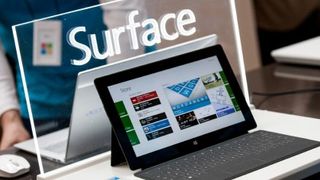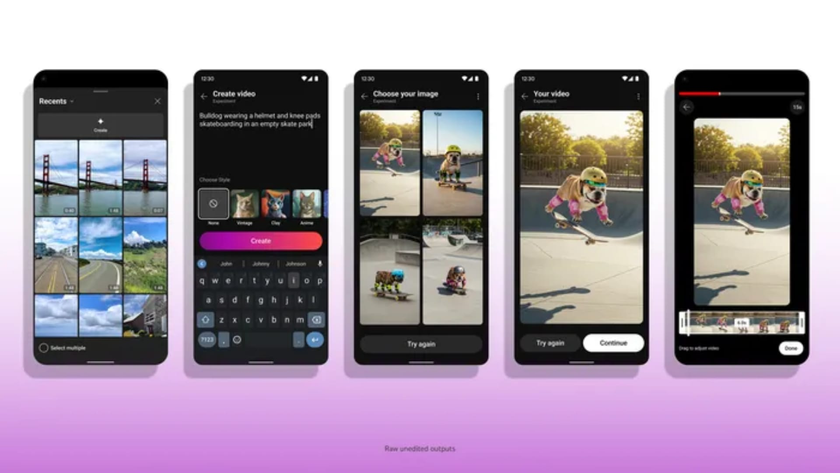Windows 8 one year on: where did it go wrong?
What Microsoft should do to salvage its touchscreen dream
That was supposed to change, yet Windows 8.1 has only delivered a handful of fixes in the year since the original release. To us, that shows Microsoft is still too cumbersome as a business.
If Redmond can hit back with some features that merge Windows, Windows Phone and Xbox quickly, though, we could come to see Windows 8 in a whole new light.
Somebody make some apps, now!
Next, Microsoft has to spend some big money to get decent apps created, fast.
Looking at the difference between Google Play and Windows Store, it's hard to know if anyone at Microsoft has used its competitors' products before - the gulf in volume and quality is embarrassing.
What's needed is for somebody to identify the top 200 apps and get them made for Windows - properly. No matter what the cost.
If the news leaked by Dell is correct, and Xbox One can run Windows 8 apps, there's even more reason to push serious investment in this area. Microsoft needs to get ruthless over sub-standard third-party apps, and seriously buck up its own ideas.
Embrace the Xbox One... and Windows Phone!
The Xbox team at Microsoft once had little to do with the Windows division, and perhaps that explains why the Xbox 360 was so successful. They've had no such luck this time, and the circus surrounding E3 and GDC this year shows that Windows-itus is catching.
Are you a pro? Subscribe to our newsletter
Sign up to the TechRadar Pro newsletter to get all the top news, opinion, features and guidance your business needs to succeed!
Somehow the Xbox One looks like it could be in pole position this Christmas after the disastrous delays to Watchdogs, Drive Club and Titanfall - so make it tell. Windows and Xbox has been made to work together, and a successful Xbox launch could give Windows 8 a shot in the arm.
Recent sales figures have also shown that Windows Phone is starting to gain traction, and that's great news for Windows 8. Redmond needs to make sure the benefits of people using these successful platforms with Windows are clearly and properly communicated.
Strive to cut prices
Existing Windows devices have been far too expensive, and Microsoft needs to find a way to keep costs down.
This is going to be extremely difficult because Redmond isn't making money through its app store or services. But somehow prices of premium Intel-based tablets have to fall.
As web apps prevail, the time for playing on Windows' strengths of compatibility is nearly over.
Imagine a person who uses Google Drive to write documents, Dropbox to share them and enjoys a game of Real Racing in between. Now imagine the decision for that person, making a choice between a £399 iPad 5 and a £1000 Sony VAIO Duo 11.
Right now, there's no contest.
Don't ditch Windows RT
The final point may come as a shock.
While Windows RT has been an omnishambles, Microsoft shouldn't spike Surface RT. In fact, it's one of their greatest opportunities.

If Microsoft could make the above points stick, it could lead to a reinvigorated Windows RT, and it has some serious tricks up its sleeve.
With its rich new high-definition screen and superb battery life, there's no reason that Surface can't symbolise the revival of Windows 8's fortunes, provided Microsoft can keep the price down and get the app choice up.
It's a long road back
What's clear, however, is that turning around Windows 8 is no easy task. The release of Windows 8.1 is a start, but it's unlikely to change anything.
The new Surface Pro 2 and Surface RT 2 look good, yet a hardware update wasn't really what they needed. By and large the original Surface tech was good; it's the foibles of the OS that's really holding the devices back - particularly the RT version.
And that's the really astonishing thing. Microsoft doesn't seem to realise that Windows 8 is the problem.
It's not all doom and gloom, and Microsoft has worked hard to create a superb product line-up, that for the first time in its history, is starting to converge to create a strong, unified experience. However, it will take a serious visionary to replace Ballmer, and to steer Microsoft through the next phase.
A year ago this week, Microsoft released the first Windows OS of the tablet age. It could be two years from now that Microsoft gets it right. But that could be too late.










